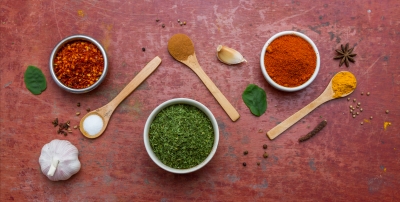10 Heart Healthy Cooking Tips
 With some heart healthy cooking, you can still enjoy delicious meals on a heart healthy diet. Plus, you don’t have to follow some strict “diet”. Many times you just need to tweak what you are already eating.
With some heart healthy cooking, you can still enjoy delicious meals on a heart healthy diet. Plus, you don’t have to follow some strict “diet”. Many times you just need to tweak what you are already eating.
Here are 10 tips for heart healthy cooking.
#1 Replace processed grains with whole grains
This involves more than just switching to whole grain bread. Select whole-wheat flour, whole cornmeal, quinoa, and oatmeal to boost fiber intake. Also, look at the pasta and rice your purchase. Select whole grain pasta and brown rice for heart health. Some whole grain products take a little bit longer to prepare than their processed counterparts. Keep this in mind as you make the switch.
#2 Eliminate salt and watch for hidden sodium sources
Many canned and processed foods are high in added sodium. Read labels and select options that have “No Added Salt”. You can also reduce sodium content of canned vegetables by rinsing them in cold water prior to preparing. Take the salt shaker off the table to break a habit of salting your foods before you even try them.
#3 Eat more fruits and vegetables
Prepare well balanced meals that include plenty of fruits and vegetables. Every meal should have a fruit and/or vegetable and it’s okay to eat more than one serving. The DASH (Dietary Approaches to Stop Hypertension) Diet recommends 4-5 vegetables each day AND 4-5 servings of fruit daily.
#4 Use nonfat yogurt in place of sour cream
Substituting nonfat yogurt for sour cream in recipes is an effective way to reduce fat intake, while boosting calcium. You can strain the yogurt using a paper towel to eliminate extra water for a creamy texture.
#5 Select lean cuts of meat
The more marbling or visible fat a meat has, the more detrimental to your waistline and heart. Select lean cuts, such as round, sirloin, loin, chuck, and extra-lean ground beef. You can reduce the fat and calories in ground beef recipes further, by rinsing the ground beef with hot water after browning.
#6 Use herbs and spices for flavor instead of added fat
You can add the flavor you seek by using citrus products, spices, herbs, tomatoes, onions and vinegar. Play with different combinations to learn what you enjoy, so you can cut back on added sodium and fat for flavor.
#7 Include fish in your diet at least twice a week
Fish is a rich source of heart healthy omega-3 fatty acids. Consuming two or more servings of fish weekly is connected to a 30% reduction in heart disease risk. There are many different types of fish and you may have to do some trial and error before you find one or two that you like. As you make heart healthy cooking changes, you can find many healthy fish recipes that do not include battered, fried, and buttery cream sauces. Look for recipes that use lemon, herbs, and spices to season the fish.
#8 Replace butter in recipes with heart healthy oils
With heart healthy cooking, you can replace some of the butter in recipes for healthier oils without compromising results. Consider using canola or olive oils rich in monounsaturated fats.
#9 Snack on nuts
Nuts contain heart healthy monounsaturated and polyunsaturated fats, as well as fiber. Replace unhealthy snacks with a handful of nuts to promote heart health. Just don’t go overboard. Nuts are nutritious, but also high in calories.
#10 Beware of portion sizes
Do you really need seconds? It takes ~ 20 minutes for your head to tell your stomach it is full. Don’t rush back for more. Take your time with meals and make sure you are really hungry. Also, remember what you are served at a restaurant is not a normal portion size. You do not have to eat it all. Consider taking some home for a second meal. Same goes for store bought muffins or cookies. They are usually not a standard portion size. Keep this in mind before you indulge in too many.
Bonus tip: It is hardest to eat healthy when you are in a rush or the end of the day when you are tired. Help yourself (and your heart) by planning in advance. Preparing healthy meals in bulk and then freeze. You’ll have ready-made heart healthy meals ready to go in a crunch.
For further guidance on steps you can take to lower cholesterol levels and reduce heart attack risk, access the free e-course “How to Lower Cholesterol in 8 Simple Steps” at http://lowercholesterolwithlisa.com.
All the best,
Lisa Nelson RD
Health Pro for HealthCentral
Image courtesy of jk1991 / FreeDigitalPhotos.net



